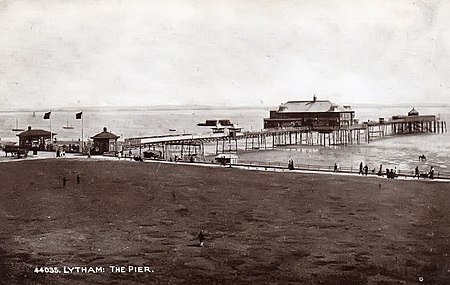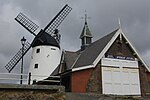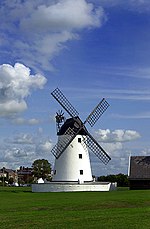Lytham Pier

Lytham Pier, a pleasure and working pier, was opened in the seaside town of Lytham, Lancashire, England in 1865, in the face of reservations from local residents. The pier underwent several renovations during the 1890s and early 1900s before being badly damaged by a storm in 1903, during which two barges collided with the structure and split it in two. A fire in 1928 resulted in extensive damage to the pavilion, which was not rebuilt, although the pier itself was reopened several months later. Following a period of decline it was closed to the public shortly before the outbreak of the Second World War. The pier was demolished in 1960 despite the protests of thousands of local residents. Plans to rebuild the pier were discussed by local councillors in 2007, with the Lytham St Annes Civic Society opposed to any such plan and no further progress has been made since that initial proposal.
Excerpt from the Wikipedia article Lytham Pier (License: CC BY-SA 3.0, Authors, Images).Lytham Pier
West Beach, Borough of Fylde Ansdell
Geographical coordinates (GPS) Address Nearby Places Show on map
Geographical coordinates (GPS)
| Latitude | Longitude |
|---|---|
| N 53.7337 ° | E -2.9626 ° |
Address
West Beach
FY8 5QH Borough of Fylde, Ansdell
England, United Kingdom
Open on Google Maps







